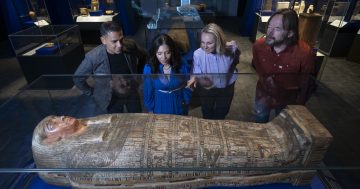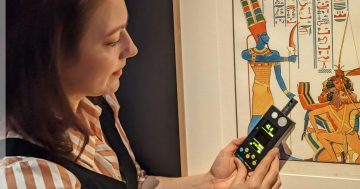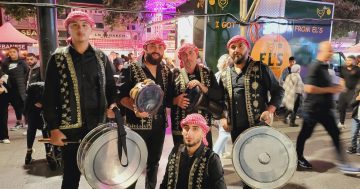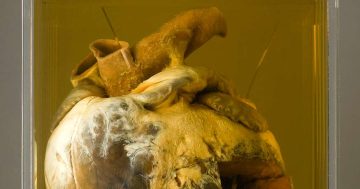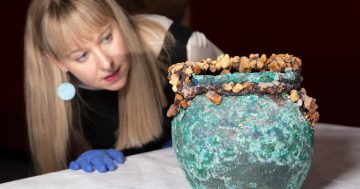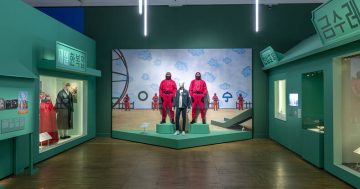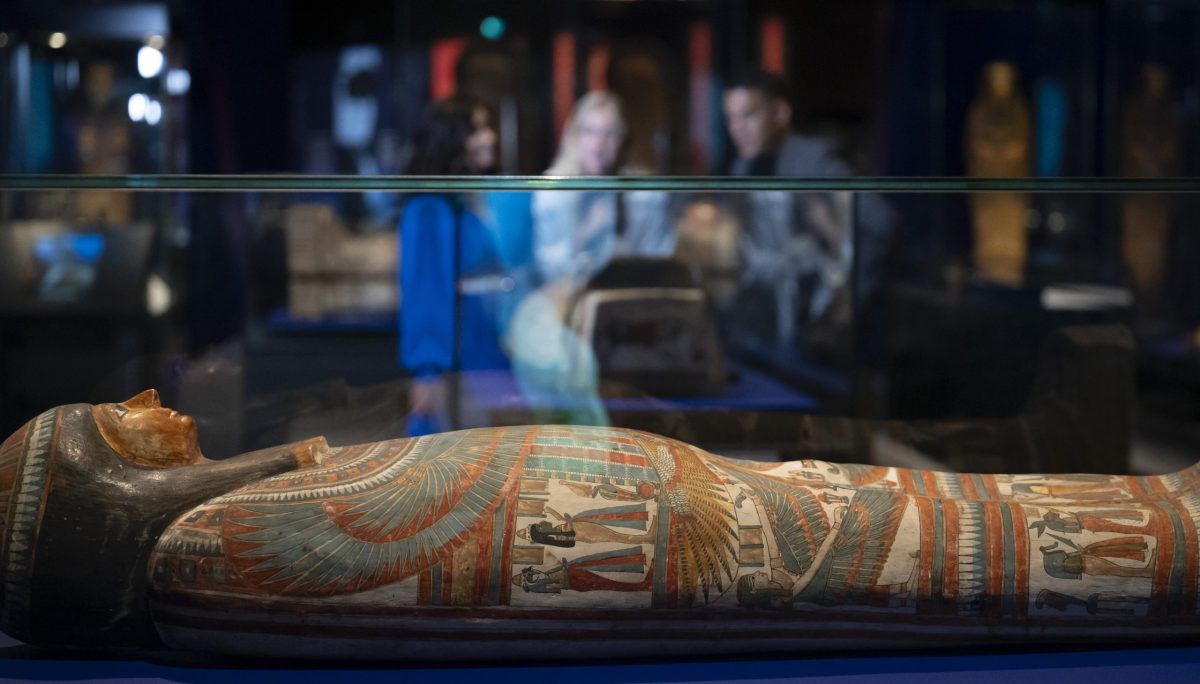
Ever seen a real mummy? Head over to the National Museum of Australia’s Discovering Ancient Egypt exhibition for your chance. Photo: National Museum of Australia.
Hands outstretched, shuffling feet, fraying bandages aged and yellowed with time… Hollywood has depicted the mummy as a monster clad in cloth since the 1930s.
They get a bad ‘wrap’, but in reality ancient Egyptian mummies lead a profound journey into their eternal afterlife, informed by the knowledge, beliefs and rituals that define one of history’s most fascinating civilisations.
Senior curator at the National Museum of Australia (NMA), Craig Middleton explains how mummification happened, what made it so expensive, and why it was carried out with so much reverence.
“There are many intricacies to mummification, but even more complex are the reasons people were mummified at all,” he says.
“The ancient Egyptians believed that when a person died, their physical body acted as a conduit between spiritual and physical worlds.
“Success in the afterlife could only really be achieved if a deceased’s body was preserved, so a person’s Ba (soul) could make contact with and receive offerings from their family.”
Linen wrappings, oils and resins, incense, perfumes, protective stones, jewellery and statuettes – they all worked to magically transform a person so they could move freely between earthly and divine worlds.
Artisans responsible for grave goods supply were well respected and priced their products to match. This meant formal mummification was mostly restricted to the upper class and elite.
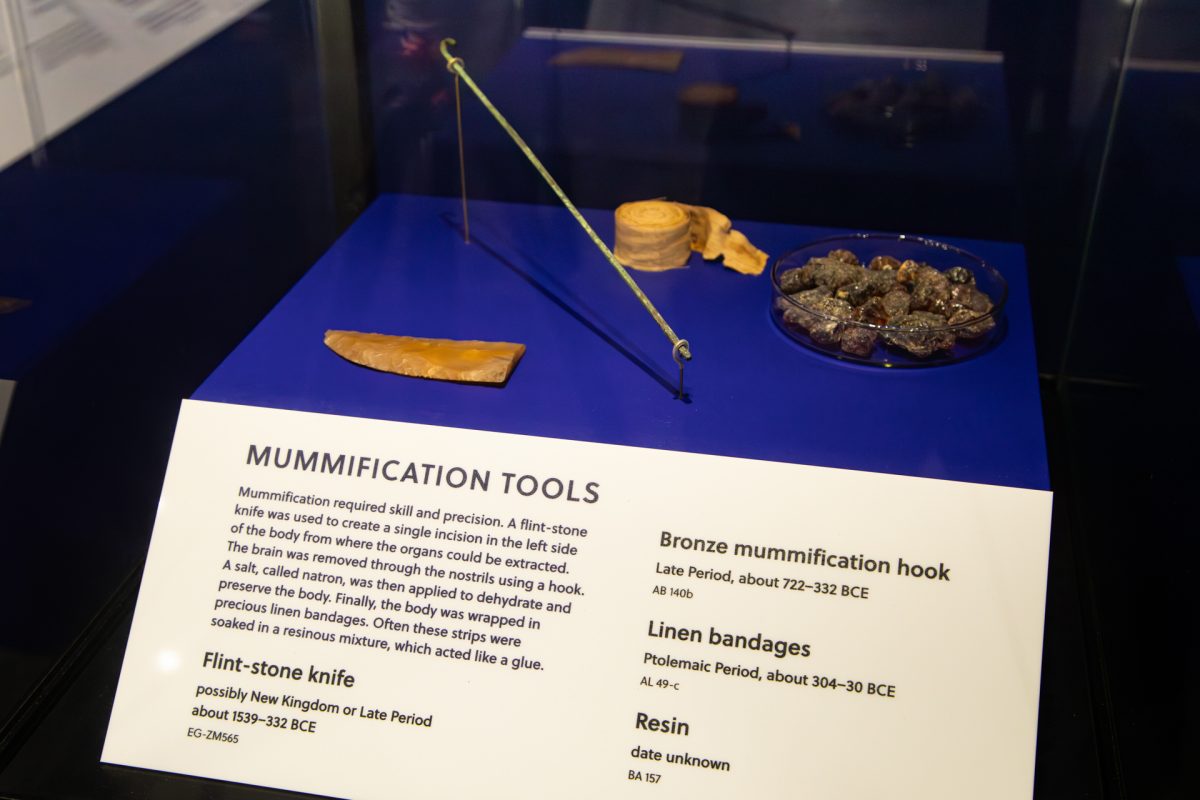
To have real mummification tools on display at NMA’s Discovering Ancient Egypt exhibition is a rare treat. Photo: Michelle Kroll.
Preparing and transforming the body was done by Egyptian priests, adept spiritualists who had a profound understanding of human anatomy.
“Time is of the essence in the race against decay, so the first step was to wash, cleanse and anoint the body, which was done as soon as possible after death,” Craig says.
“Once the body was clean, it was time to remove the brain. This was indeed done through the nose, but it wasn’t completed in one fell swoop like the movies suggest.
“A hooked rod was used to very carefully bring out small sections of tissue at a time, to avoid damaging or disfiguring the face.”
Next, the lungs, liver, stomach, and intestines were retrieved through a single neat incision. Each organ would be painstakingly mummified and placed in a canopic jar, protected by the corresponding god.
The longest step followed; drying out the body. Egypt had fantastic natural conditions for this and ancient priests helped the process along using petrifying salts, but it could still take weeks to complete.
Once dry, the body would be carefully wrapped with linen bandages and ready to take up its last resting place.
“Ancient Egyptian coffins had many layers,” Craig says.
“The body would be wrapped in linen and sometimes covered with a beaded sheath. This was followed by a covering plank, then an inner coffin and finally an outer coffin, or sarcophagus.
“They were huge, ornate works of art, designed to keep the body physically and spiritually safe in its new home underground.”
While we might think of mummification as morbid or even theatrical, the time and resources spent to prepare and preserve one person’s body is another indication of the process’s reverence.
“Books, plays, movies, cartoons… many present mummies as monsters or fantastical characters, something to be feared,” Craig says.
“But the ancient Egyptians never understood the mummified body as a monster. They were just respected members of the family, their body to be carefully looked after by loved ones.”
There you have it! Though they’re often depicted as linen-wrapped nightmares, mummies are simply human. Long-deceased and preserved to perfection, but human all the same.
Explore rare and remarkable artefacts – and mummies – at the Discovering Ancient Egypt exhibition, now on at the National Museum of Australia until 8 September.
Original Article published by Morgan Kenyon on Riotact.


